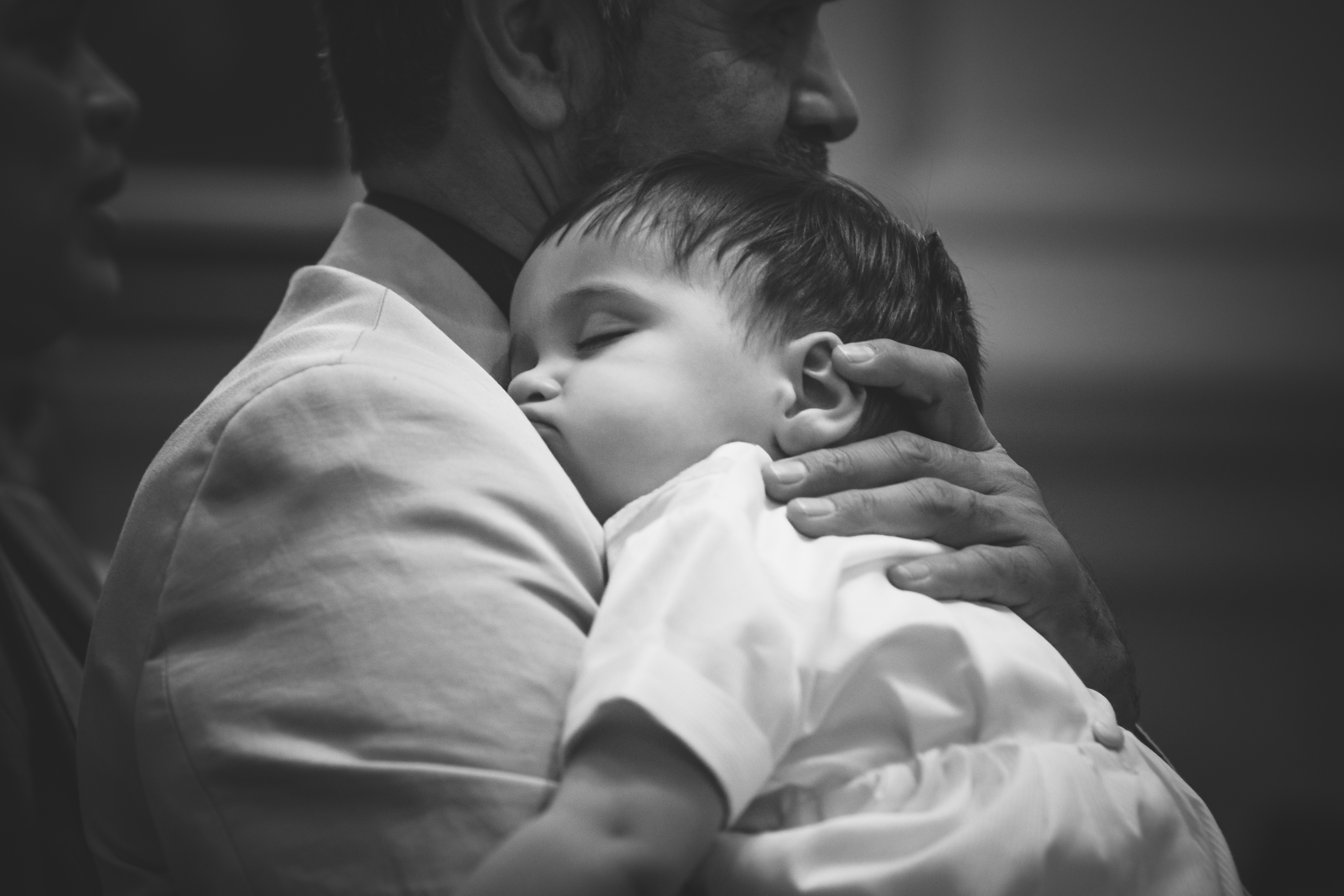We’re all trying to make the most of our fleeting time as a family. Not only for ourselves, but for our children too.
Time spent together is the foundation of any relationship. Without putting in the time, the relationship exists only in name. But merely being on the pitch doesn’t win the game, it’s what you do when you’re there that determines the results you get.
This isn’t just about you though. What happens in the time you spend with your children will shape the kind of person they become, the kind of relationships they make. It will influence their success in, and quality of, life. For the rest of their lives. When we’re impatient, or there in body but elsewhere in mind, we’re not just losing the precious time with our family, the time we’ve worked so hard to earn. When we’re repeatedly mentally absent or impatient, we’re shaping who they are in unhealthy and unhelpful ways.
When you understand how this works you will have more motivation to change. Arguably, and it’s a very strong argument, attachment theory is the most important idea in child development, full stop. So if you want to raise your amazing little person to be the best big person they can be, you need to understand it.
Let’s go.
Dr John Bowlby dedicated 50 years of his life to proving an idea he’d glimpsed at the very beginning of his career. Aged 22, he was about to embark on a medical career, when he started working with delinquent children. There he noticed that a large portion of his study had all experienced a prolonged period of separation from their mothers in their early life. Despite qualifying as a doctor of medicine, he never practiced, instead choosing to continue his work with children. He trained as a psychoanalyst, qualifying in 1936 aged 30. During WWII, Bowlby became a Lieutenant Colonel in the Royal Army Medical Corps and worked with children evacuated from London to Cambridge to escape the bombing.
His particular interest was around the mother-child relationship. He’d seen things that couldn’t be explained by Freud’s dominant theory of the day. But he didn’t have the data, so he kept working. By the late 1950s he had amassed a body of evidence that indicated the fundamental importance for human development of attachment relationships. It wasn’t until 1988 that he felt he had enough evidence, drawn from fields like evolutionary biology, developmental psychology, cognitive science and others, that he fully articulated attachment theory.
Attachment theory says that, in the first 2-3 years of a child’s life, they develop an emotional attachment to the one, two or three primary carers in their lives. A primary carer is someone who has established the kind of bond with the child, where the child relies on them to have their needs met. These bonds are formed from by the repeated experience of care the infant has from the very early days.
The bond a primary carer creates, through reliable, sensitive responses, does a number of things. It builds a solid foundation of security for the child. They know there’s someone there for them who will meet their needs. Someone to feed them when they’re hungry, warm them when they’re cold, protect them when they’re afraid, help them work through their difficult emotions, stop them when they’re risking themselves serious harm, give them attention when they feel alone, love them for who they are, not what they do.
This is attachment-building.
It’s a blueprint for relationships formed in the early years, that impacts on your child’s life, for the rest of their life. We continue to experience attachment needs throughout our lives, often triggered by moments of need or uncertainty. It’s in part, why we want recognition, validation, attention, why people crave Likes, why a simple ‘good job’ goes a very long way, why a sincere ‘thank you’ and heartfelt ‘sorry’ matter. It may well be why ‘fame’ is so sought after. In theories of motivation (Self Determination Theory if you’re a geek), it’s relatedness. We are motivated by connections with others.
People with strong, secure attachments in their early years, develop confidence and resilience. They know how to form healthy emotional relationships, because they have experienced absolute trust in their primary relationship(s), they can start to build it in new ones.
An insecure attachment tends to lead to people having more difficulty forming relationships, finding it harder to trust – because their primary carers weren’t as reliably available and helpful, they don’t expect other people to be either. Those with the most difficult attachment experiences, are more likely to experience addiction, do poorly academically, suffer poor mental health and engage in anti-social or criminal behaviour.
A healthy attachment gives a child, who later turns into an adult, a secure base from which to go out and explore the world.
What this means for you
Building a strong attachment means being a consistent, stable, caring, calm presence in your child’s life. Don’t worry, it doesn’t mean you need to be perfect, research shows that, as long as you do well about 50% of the time, you’ll be doing them well.
Being calm means being more emotionally regulated and more patient. Being present, well means being really present. Not just absentmindedly playing with them or listening to their babble while you plan what to do about that thing at work.
Working on building a strong bond isn’t just a selfless act. When you work on your patience and presence, and form a strong bond, you benefit in spades. I can speak from first-hand experience. I went from being frustrated with myself and my situation to becoming proud of the man I was turning into. I was enjoying the journey of change, in spite of the set-backs and screw ups, I knew I was fulfilling my role as a father. I found it easier to change things in other areas of my life. I was better at my job, more able to have the kind of conversations I’d have shied away from in the past. I can’t understate how it feels to be proud of yourself as a parent. There’s an inner glow you get, a core that you can return to no matter what the world throws at you. It doesn’t matter how problematic a once trusted business partner turns out to be, how drastically you’re forced to change your path and your plans.
I’ll be clearer. I left a business I thought would set me up for life because it was turning me into someone I didn’t want to be. My business partner became highly controlling and unrealistically demanding. I left with no plan, but because of the kind of dad I was becoming, I knew it was right. I left with confidence and soon sorted something else out.
The pressure of needing to provide was there, but it wasn’t a burden, it became motivation. I knew I was becoming better and I knew I could find a way to provide, not just financially but fully, in every dimension a parent is meant to. This strong bond you form isn’t a one way thing. It gives you a solid foundation. It gives you more strength. It gives you more spirit. Like your kids, that is priceless.
The right kind of attachment
Like anyone working to achieve something great, Bowlby didn’t do it on his own (this seems to be one of those absolute truths. You see it in sports, with the many different types of coaches for star performers, the core teams of those super successful businesses, or the village it takes to raise a child). The brilliant Mary Ainsworth, who worked closely with Bowlby, took his work further, identifying four types of attachment style. Understanding them will help you understand what’s important in terms of how you show up with your children. But remember, like any model, it doesn’t fully reflect reality. It’s not this clear cut, nor as exclusive.
When parents are consistently available, children learn they can rely on them
When children learn they can rely on adults to care for them, they develop a secure attachment. Their carers are responsive to their needs, they help the child calm down, they set clear boundaries, they give unconditional love instead of withholding attention or love to get the child to conform. This doesn’t mean they’re constantly by their children’s sides, that they shield them from the world, they let their children explore and learn but are there for them when things go wrong. Children with this type of attachment are better able to self-regulate, they learn more easily, have more persistence and build healthy relationships.
When parents are consistently unavailable, children learn to keep things to look after themselves
These children have learnt that they can’t trust adults to meet their needs, to care for them. Their carers were not available to meet their needs, often leaving them to deal with their own fear, pain and emotional stress rather than supporting them through it. The child learns not to seek help in times of stress but try to manage their internal state by themselves. They create distance between themselves and others and need to feel in control. This is called an insecure avoidant attachment.
When parents are unpredictably available, children seek attention and learn they can’t rely on others
These children are uncertain about whether they can trust adults, because their carers were unpredictable in how they responded to their children at times of need. Sometimes the parent would be caring and nurturing, at other times dismissive, distant or insensitive. This makes them overly clingy or needy ‘turning the volume up’ when they express their needs because they are insecure about whether they are going to get noticed and met. Later in life they tend to be needy and need constant reassurance from people they’re close to. This is called insecure anxious attachment.
When parents are rejecting or intrusively harmful towards children, children never learn to feel safe
These children have often suffered some form of abuse, trauma or neglect in their early years. Not only were the adults who were supposed to care for them unavailable to do so, they were sometimes frightening or frightened themselves, so the child never learned to feel safe. Adults who experienced these kinds of relationships in their early years are often hyper-vigilant in later life and controlling and manipulative in relationships. This is called disorganised attachment.
If you’re present and patient with your children. If you meet their feelings of fear, frustration, anger, shame, guilt, pride, excitement and joy with love, care and attention most of the time, you’ll be building a secure attachment. You’ll be being a great dad.
When you get right to the heart of it, doing this well, doing parenting well, is about building a strong bond, a strong relationship. But, we get so distracted in our day-to-day, so caught up with work and what we think other people think. We question and doubt ourselves, We’re in a rush to achieve, to have, to be, we forget to slow down and just love, patiently and fully. I hope this not so little article has helped you remember that.
Every week I send out an email.
One week it’s articles, evidence, stories and insights that I’ve found researching what it means to be a good dad, so you don’t have to.
The week after it’s a carefully crafted question, to help you find an answer that fits seamlessly into your life.
If you want to get them, go here.


